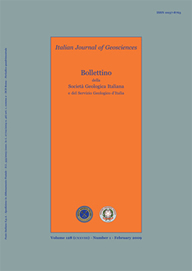
Seismotectonic characteristics of the Italian central Alps and implications for the seismic hazard
G.B. Carulli(*) & D. Slejko(**)
(*) Dipartimento di Scienze Geologiche, Ambientali e Marine, Università di Trieste, Italy.
(**) Ist. Naz. di Oceanografia e di Geofisica Sperimentale, Trieste, Italy - dslejko@ogs.trieste.it
Volume: 128 (2009) f.1
Pages: 201-215
Abstract
This study investigates the seismotectonic characteristics of the central Alps, and mainly the Lombard sector. The analysis of the historical and recent instrumental seismicity can identify the areas where earthquakes with magnitude around 5 occurred: the Chur and Verona areas, the region around Lake Garda, and the Lombard Po plain, slightly south of the foothills. Minor seismicity interests Engadin, northern Valtellina, Müstair, and the Venosta valleys. Most of the earthquakes show a dip-slip focal mechanism, generally related to reverse faults, but a few strike-slip motions were observed as well. Six vertical cross-sections have been constructed by collecting information about the surficial geology, deep crustal structures, and seismicity. A direct link between the hypocentral distribution and the tectonic structures is sometimes difficult, but the analysis has given some seismotectonic suggestions. Three main seismotectonic domains remain identified: the Lombard Po plain, the Garda area, and the Alps s.s. Among these domains, the Garda area shows the highest seismicity and the earthquakes are associated to the Giudicarie system and its possible interference with the Schio-Vicenza system. The general pattern of the seismogenesis is the key to defining the seismogenic zones to be used for seismic hazard assessment at regional and national scales.
Keywords
Get Full Text